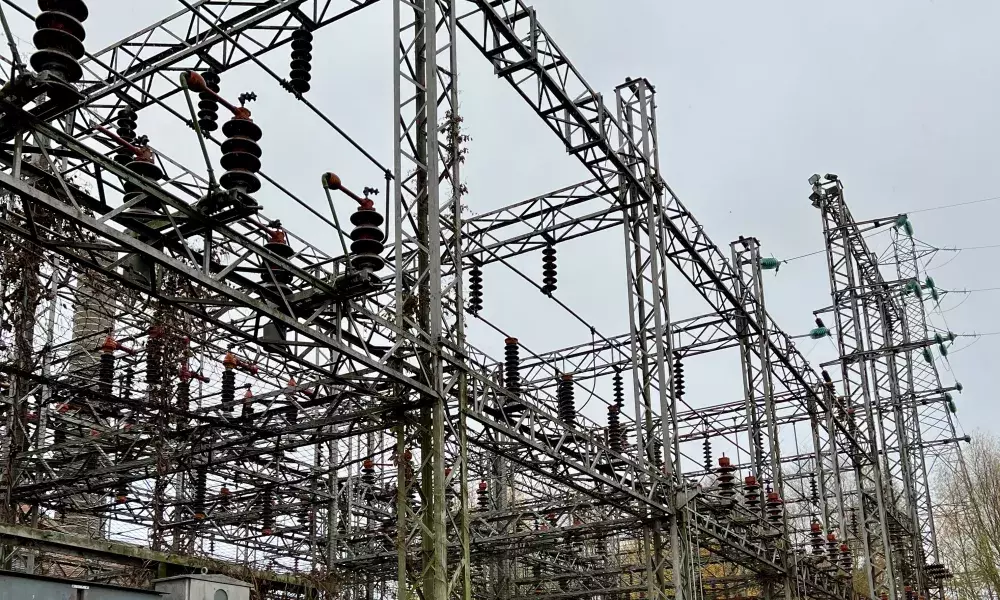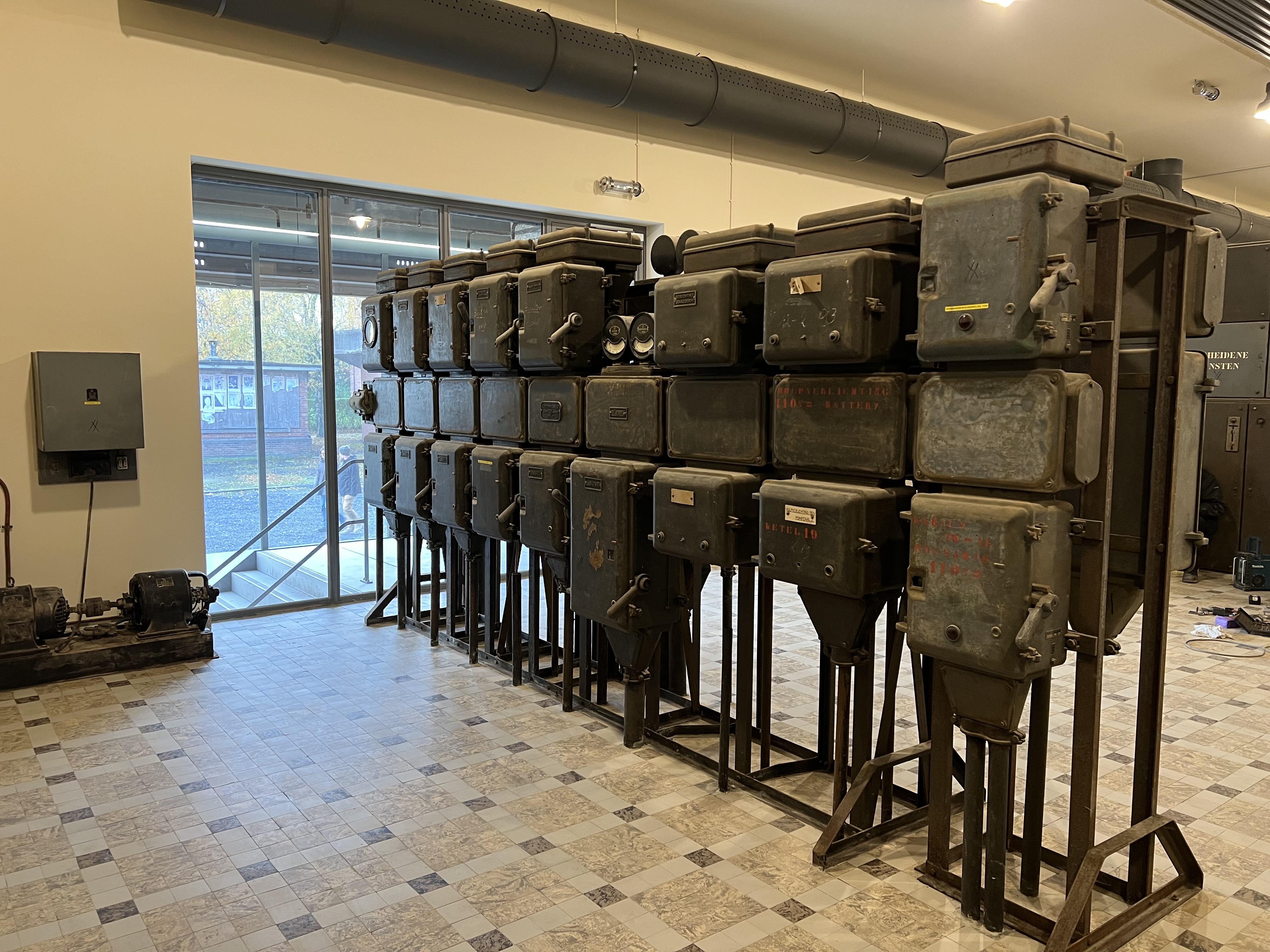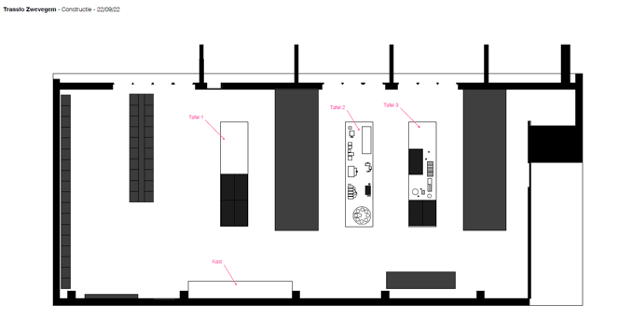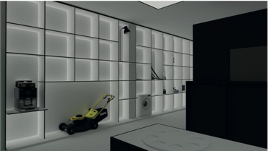
 RE/SOURCED is a circular renewable energy project and is explained in more detail (here and here). While most of the publications on its progress have related to its technical design and the regulatory challenges it has encountered, not all of its activities are designed to have a technical outcome.
RE/SOURCED is a circular renewable energy project and is explained in more detail (here and here). While most of the publications on its progress have related to its technical design and the regulatory challenges it has encountered, not all of its activities are designed to have a technical outcome.
One of the Work Packages focuses exclusively on maximising the educational value of the project. It is being led by the Province of West Flanders partner. While at the pre-implementation stage, core aspects of the design have been finalised and tenders issued for their construction and provision.
The delivery of this Work Package is progressing well.
The educational element comprises a mix of Indoor and Outdoor “Points of Interest”.
There are four Indoor and six Outdoor Points of Interest.
The Indoor Points of Interest comprise
- 3 interpretative tables
- 1 Wall display – which will be called "Wundercloset"
The six Outdoor Points of Interest comprise:
- An Electric Swing
- A Gravitational Energy installation
- An Energy Floor
- An Energy Bike
- A Scale version of the Transfo site
- An X-Ray viewer.
We will look in more detail at the points of interest below but first it is worth considering the aim of the educational element within the project. Stijn Vandamme of the Province of West Flanders describes it well when he says “the goals of the educational element of RE/SOURCED are twofold. We want to encourage visitors to consider producing renewable energy themselves at home. To guide their thinking, we want them to learn the value of different types of energy in a playful way through RE/SOURCED.”
As with the other aspects of RE/SOURCED, the educational element has a notable innovation slant to its design and delivery. The team has used the expertise of the project’s Advisory Board that has the Technopolis represented - Technopolis is based in Mechelen (Belgium) and is recognised as a leader in STEM engagement
The innovative nature of this RE/SOURCED educational work-package has been recognised by external players who are unconnected to the project’s delivery. Subject to a successful appraisal of the educational platform once it is constructed, ELIA[1] has expressed an interest in using the same design elements to create a mobile or touring version. This could provide schools, in locations far from the Transfo site, with access to a similar educational and engagement amenity to that delivered through RE/SOURCED.
This is not the only external interest in RE/SOURCED. Essex County Council (UK) has expressed their interest in the PV car (an educational tool developed as part of the Empower project, and continuing to be used within the educational trajectory of RE/SOURCED). The team exchanges its knowledge and learning with POM West Flanders (the regional development agency of West Flanders). The team also maintains links with Regional Technology Centre of West Flanders and also works with colleagues in Fabriek Energiek. An additional stream of communication is with Howest University of Applied Sciences (in the field of energy management).
[1] Elia is a Belgian transmission system operator for high-voltage electricity (30,000–380,000 volts), located in Brussels, Belgium
The four Indoor Points of Interest will be located on the ground floor of the redeveloped Turbine Hall building. This now comprises a set of newly created commercial offices. The Indoor Points will be formed through a set of three interactive exhibits mounted on tables with a separate wall mounted exhibit.
through a set of three interactive exhibits mounted on tables with a separate wall mounted exhibit.
The tables include:
- An interactive exhibit comprising four screens showing the operation of the Transfo SMART Grid - these allow for production and demand to be seen in real time. It will encourage visitors to engage in a game where they will be the Transfo SMART Grid Manager, and where they have to balance energy production, utilisation and storage. This is not simply a visual presentation - as the Manager, they will have to buy electricity from a public grid if demand exceeds local production or, when local production exceeds demand, make the decision either to sell excess generation or allocate it to the storage technologies. And there will be a little “twist” - random events (problems!) will be introduced to show the visitor how being the Manager is not always straightforward. These will be similar to unforeseen energy grid events that typically happen in practice.
- A separate exhibit will comprise a set of basic, hands-on experiments. These will demonstrate the principles of electric circuits, helping the visitor to understand the difference between power and voltage as well as the concept of “resistance”. It will show that when you need to generate more power, you will experience more “resistance” and you must invest more effort for this resistance to be overcome.
- The third demonstration table will position the SMART Grid at Transfo within the wider distribution network in Belgium. Effectively, this will include a “scale” version of the public grid in Belgium. It will show the difference between the High Voltage, Mid Voltage and Low Voltage networks and how they inter-relate. It will also show how the structure of these networks will change in the future.

The Wundercloset
The Indoor Points of Interest will include a Wundercloset. This is a wall mounted closet that displays common household appliances. To interact with the appliances, visitors have to put some “wheels in motion” through turning a hand generator. There will be a meter between this generator and the chosen appliance that will show how much energy needs to be generated in order to get the appliance to start-up (e.g. human energy produced by turning the wheel 100 times gets a washing machine started).
As part of their visit, the visitor can choose to be tested on their understanding of the principles that have been demonstrated by the exhibits and their personal attitude to energy usage. The five question test will be practically focused and designed to reinforce learning that people can valuably apply to energy usage in their daily lives.
The six Outdoor Points of Interest are located throughout the site.
- Electric Swing - With this exhibit, as visitors “swing”, their motion will be converted into electricity. The plan is that their “swinging” will generate the electricity to illuminate a key part of the structure (this is yet to be decided but could include the Transfo steam pipes).
- Gravitational energy. This will provide a practical demonstration of the difference between potential energy and kinetic energy. The proposed design allows visitors to pull themselves off the ground on a rope to get to a raised position (potential energy) and then allow themselves to be lowered, in the process converting their potential energy into kinetic energy. As they fall, the energy they generate will play a sound recording explaining the difference between potential and kinetic energy and how they are demonstrating an experiment that utilises both types.
- Energy floor (based on a technology by www.energy-floors.com). The proposals include a ground based exhibit comprising nine illuminated squares (on the ground). Games can be designed around the squares such that they light when a visitor interacts with them in a certain way. The exhibit is connected to the internet and this is where the educational element comes to the fore. It is proposed that school pupils will be set a (computer) programming competition where they are provided with access to the on-line dashboard controlling the exhibit and tasked to design new games using three of the squares.
- The Energy Bike (based on a technology by www.wewatt.be) If the other exhibits do not engage visitors, this one will! It is meaningful to visitors of any age as it shows what to do if your mobile phone runs out of charge. Here, visitors will connect their phone to a charging station and will see its charge being replenished as they cycle. The harder they cycle, the faster the charge. This is a particularly practical demonstration of energy generation.
- Scale model of the Transfo site. This will be a scale model of the Transfo site. It will provide visitors with a tactile overview of the site through which they will appreciate the overall development and the unique, individual, facilities it comprises.
- The X-Ray Viewer. This will be an Augmented Reality (AR) point of interest. In its initial configuration, it will allow visitors to use AR device to “see” Transfo’s on-site renewable energy infrastructure. With the headset on, panning left, they will see the wind turbine and the car park’s solar roof. As they pan to the middle of their view, the SMART Grid’s (underground) cables and storage devices will come into view and as they move right, they will see the private houses and other end users. As AR is configurable, it will be possible to update the “viewable content” if the infrastructure is expanded.

The design of the RE/SOURCED educational element is not limited just to the physical aspects of the points of interest. Exhibits of this kind are subject to “hard use” (visits by schools etc) and while robustly designed, the technologies involved are by no means indestructible. The Province of West Flanders has also given careful thought to how the exhibits can be maintained and where appropriate, upgraded. They have designed a financial business model that considers the costs associated with organising visits to Transfo and to maintaining/developing the exhibits when required.
The business model is constructed around three scenarios:
- Base Scenario - utilising 0.5 FTE which covers the construction of the facilities and their maintenance over time
- The Educational Layer - utilising 1 FTE. This scenario delivers the Base Scenario but adds an additional provision of guided tours that include input from Transfo staff etc. Tours would be primarily supported on a “reactive” basis - they would be in response to schools and other educational establishments approaching Transfo asking to visit. There would be a below-cost charge for organising and hosting these visits
- Proactive Educational Layer & Funding - utilising 1.5 FTE. This scenario includes all of the activities of the Educational Layer but adds in a new role for Transfo to be “proactive”. This proactive activity would see Transfo promote the facility to colleges and schools. It would also see the team actively pursuing funding and sponsorship opportunities.
None of the scenarios generate a financial surplus for the educational element of the project. But they provide an income stream that will help the partners ensure that the exhibits remain operational and current. Should Scenario 2 or 3 be pursued, they will increase the engagement of young people in Transfo.
It can be seen that RE/SOURCED is not just addressing the technical and regulatory challenges of creating a not-for-profit SMART Grid - it also creates a public amenity that helps to educate public on energy matters, while at the same time being fun.
The Province of West Flanders (the Responsible Partner for this RE/SOURCED Work Package) has prepared a detailed financial model for this element - this is unusual and innovative for a project of this type. Constructing a financial model is an important activity as it shows funders that RE/SOURCED is serious about its goal of producing lasting legacy-benefits to its activities.
About this resource
The Urban Innovative Actions (UIA) is a European Union initiative that provided funding to urban areas across Europe to test new and unproven solutions to urban challenges. The initiative had a total ERDF budget of €372 million for 2014-2020.
Similar content



